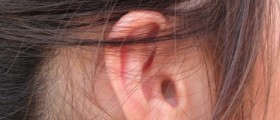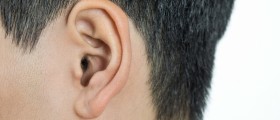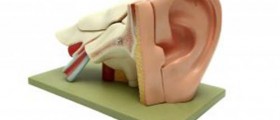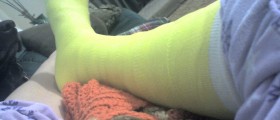Inner ear infection is also known as labyrinthitis. The labyrinth is a structure of the inner ear made of fluid-filled sacs and tubes. It comprises two organs, the cochlea, and the balance organs. Since the labyrinth is less than half an inch long, it is easily affected by infection.
Presentation of Inner Ear Infection
The leading symptom of inner ear infection is vertigo. It occurs due to movements, changes in head position, etc. There is also hearing loss. One may suffer from unilateral or bilateral hearing loss. The degree of hearing loss may differ as well.
Some patients suffering from inner ear infections complain about aural fullness, tinnitus, and otalgia. These patients may additionally feel nausea, vomit, and develop a fever. Otorrhea, facial weakness, facial asymmetry, neck pain, and neck stiffness are several more symptoms of inner ear infection. In many cases, the symptoms of inner ear infection occur after an infection of the upper respiratory tract.

Treatment for Inner Ear Infection
The treatment for inner ear infection depends on whether the inflammation of the specific structures is caused by viruses or bacteria.
In case of viral infection, patients require plenty of bed rest and proper hydration. These patients are generally sent home, and only if the symptoms get worse they are administered in the hospital. If there is extreme nausea accompanied by prolonged vomiting, fluids may be administered intravenously. Severe nausea is treated with antiemetic medications.
In some cases, desirable effects are achieved with a short course of corticosteroids. In the case of herpes zoster oticus auditory and vestibular damage can be prevented with antiviral drugs such as acyclovir and famciclovir.
If a patient is suffering from bacterial labyrinthitis, he/ she will benefit from the proper antibiotic. The antibiotic is chosen according to the culture and sensitivity results. Initial treatment must include broad-spectrum antibiotics or combination therapy (including antibiotics that penetrate cerebrospinal fluid). Once the culture results are obtained, the doctor opts for another antibiotic.
In case labyrinthitis develops as a consequence of otitis media (an inflammation of the middle ear), patients undergo a myringotomy. Myringotomy is a surgical procedure in which a doctor makes a tiny little incision in the eardrum, and this way allows the accumulated fluid or pus to drain. The effect of myringotomy is the reduction of the pressure caused by middle ear fluid or pus build-up.
In some cases, inner ear infection may cause suppurative intracranial complications. If this occurs, it is essential to consult a neurosurgeon. And finally, if there are symptoms and signs of systemic infection or unusual/atypical infections, an infectious disease specialist is consulted.
- As its name implies, labyrinthitis is an infection located in the membranous labyrinth. This structure is usually affected by bacterial translocation into the inner ear, causing vertigo, nausea, vomiting, tinnitus, and even hearing impairment or hearing loss. The inflammation can result through two different mechanisms. Inflammation can be a secondary manifestation caused by bacterial toxins and/or host cytokines and inflammatory mediators, producing serous labyrinthitis; or it can be caused directly by the bacteria, leading to suppurative labyrinthitis.
- Viral infections are assumed to play a direct or indirect role in the causation of several inner ear disorders. Viruses can either directly affect inner ear structures; they can induce inflammation that further produces damages; or they can increase the susceptibility to bacterial or fungal infections, eventually leading to hearing loss.
- SNHL can also result as a complication and sequela of bacterial infections, such as meningitis. The most common causes of bacterial meningitis in the first 90 days of life are Group B Streptococcus and Escherichia coli, while, in children, SNHL is more frequently associated with meningitis caused by Streptococcus pneumoniae or Neisseria meningitidis. The released inflammation by-products (e.g., nitric oxide, superoxide, peroxynitrite) contribute to the disruption of the blood labyrinth barrier, inducing a cytotoxic effect on the cochlea.
- Compared to other infection sources, fungal infections of the inner ear have only rarely been reported. These pathogens usually affect the auditory canal and middle ear arc, often being regarded as harmless saprophytic growth.
- One of the most promising solutions is to include nanoparticles (NPs) in the therapeutic strategy. Their small sizes (

















Your thoughts on this
Loading...